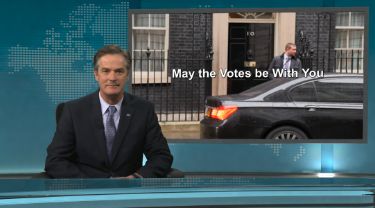Two weeks ago, Theresa May tearfully announced her resignation from a tumultuous three years as Prime Minister of the U.K. During this time, the land of hope and glory has subjected both of these emblems to one of their greatest existential threats since the Second World War. Where does the U.K. go from here, and what does it mean for business?
For May, the road has been nothing if not totally frustrating. Deadlines have come, and with them the climactic politicking, only to end in inconclusive split decisions and last-minute extensions. It’s almost becoming predictable. The latest was an Apr. 10 extension of Article 50, with a new deadline of Oct. 31. While it’s clear that getting a deal would be a long-sought treat in this protracted ordeal, the trick is in finding the formula that’s favoured by enough to tip the scales on voting day.
Yet another impasse
The latest blow to ultimate resolution came on May 17, when six weeks of talks between the ruling Conservatives and the Labour party ended without an agreement. May’s last stand will be yet another parliamentary vote, initially scheduled for this week. It’s one more attempt to corral enough votes for essentially the same deal she hammered out with Brussels months ago. It has many of the elements of Beckett’s famous play: nothing essentially changes, but we still show up, and expect a different and significant outcome.
What are the key elements of the current package? The government was planning on proposing a close customs arrangement with the EU and better workers’ rights and environmental protections, to meet some of the Labour party’s demands. May has offered the possibility of a second referendum, conditional on the deal passing this time around. That’s a major concession for the former Prime Minister, who has thus far adamantly refused a re-referendum, in staunch defence of democratic process.
Successful passage of the ‘new’ deal is highly unlikely. Both Europhile and Eurosceptic MPs seem unenthusiastic about an essentially unchanged deal that has already been defeated three times. There is hope that the bill is amended in a way that scores indicative votes that could change the proposed deal. If so, it would be a huge coup for the outgoing leader, and of course, would require re-approval by the EU—hardly a slam-dunk.
Who’s next?
What is now clear is that there will be a new Prime Minister later this year. The Conservative leadership race begins on June 10, injecting a new wave of uncertainty into an already murky and indeterminate situation. The range of Conservative candidates is disparate, leaning toward the Eurosceptic side of the party. So far, the more centrist “One Nation” group and "Blue Collar"—Brexiteers trying to woo disenchanted Labour voters—are the two main factions. The popular and ardent hard Brexiteer Boris Johnson has confirmed his candidacy. The leadership race, which culminates in the fall, bogs down the Brexit process, and could well lead to a further Article 50 extension.
Staunch Brexiteers elected to the EU parliament last weekend will no doubt further complicate the process of arriving at a deal. Discussion of progress on the file is on the EU’s June agenda, and thus far they remain open to discussing any changes recommended by the U.K. government up until that point. Add in the new EU parliamentarians and high-level appointments from other countries, whose views add further risk to the situation.
The most likely posture for the EU is openness and continued negotiation toward achievement of a deal. As costly as a no-deal situation would be for the U.K., Europe would also feel ill effects of its own. Given its current sluggish economy and the relentless rise of populism and nationalism in various member states, achieveing a workable deal with the U.K. would pay significant political and economic dividends, and perhaps swing public perception back toward support of the Union. As for the British, the only thing they do agree on is that they don’t want no deal at all.
The bottom line?
In the Brexit standoff, the stakes are as high as they ever were. They are high for the U.K., for the EU, for globalization—and also for Canadian exporters. The U.K. is by far our top EU export destination, and is home to many firms using the U.K. as their European hub. For those seeking resolution this time around, may the votes be with you!
This commentary is presented for informational purposes only. It’s not intended to be a comprehensive or detailed statement on any subject and no representations or warranties, express or implied, are made as to its accuracy, timeliness or completeness. Nothing in this commentary is intended to provide financial, legal, accounting or tax advice nor should it be relied upon. EDC nor the author is liable whatsoever for any loss or damage caused by, or resulting from, any use of or any inaccuracies, errors or omissions in the information provided.





